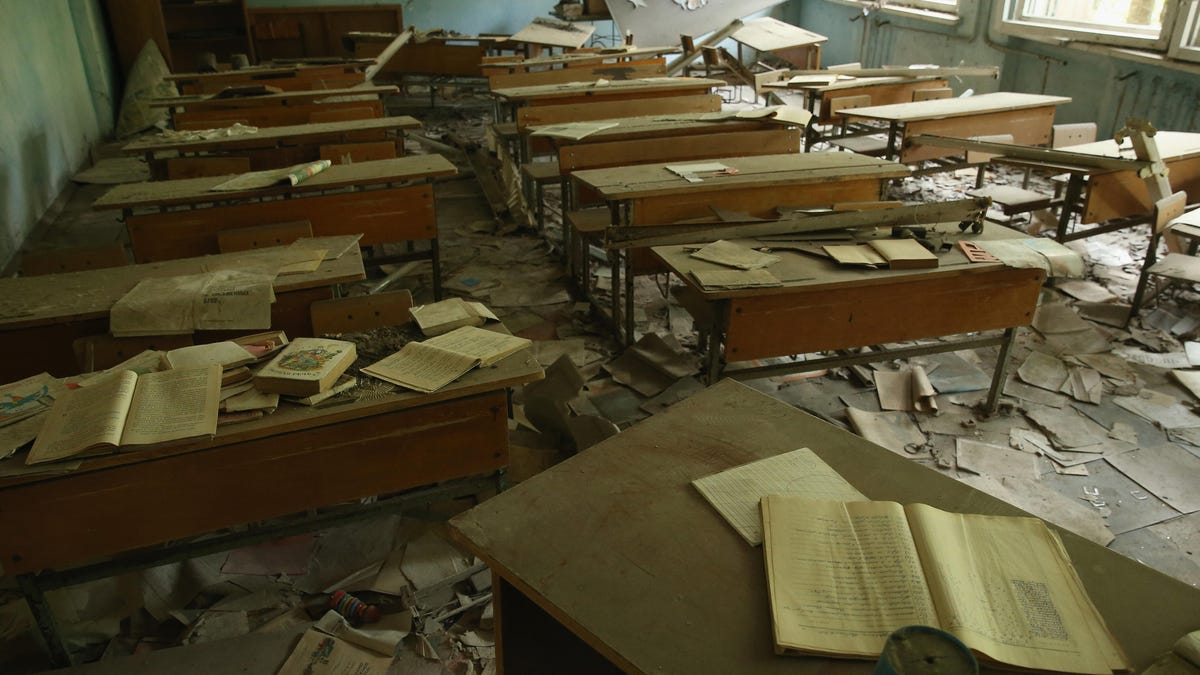Self-replicating Chernobyl mold could protect the ISS from space radiation
Radiation shields made from living organisms could help us head deeper into the cosmos.

School No. 3 in Pripyat, the atomic city abandoned after the Chernobyl explosion. This photo was taken 30 years after the disaster, in 2016.
NASA is planning to return to the moon in 2024 and, potentially, establish a permanent human presence there by the end of the decade. There are still a lot of logistical hurdles to jump over, but there's an even bigger, more human issue: Space wants to kill you.
Damaging space radiation poses a real threat to astronaut health. If humans are going to spend extended time in space -- and head to planets like Mars or beyond -- we'll need to protect ourselves from it. The Earth's magnetic field and atmosphere shield us from radiation while we're down here, but as we head out into the cosmos, our safety blanket disappears. Astronauts on the International Space Station (ISS) receive more than 20 times the normal amount of radiation than Earthlings receive in a year.
To protect astronauts, scientists have been studying an unusually hardy organism, discovered in one of the most radioactive places on the planet: Chernobyl.
The explosion that blew a hole in the No. 4 reactor at the Chernobyl Nuclear Power Plant in 1986 was devastating. In some parts of the plant, the level of radiation spiked so high that exposure would kill a human in about 60 seconds. But several species of fungi have been discovered in the reactor. And they're thriving, "feeding" on the extreme levels of radiation.
A new study, yet to undergo peer review, was published on the pre-print repository bioRxiv on July 17 and examines one of these species, Cladosporium sphaerospermum. It suggests the fungi could be used as a self-healing, self-replicating shield to protect astronauts in deep space. Specialist science publication New Scientist reported on the findings on July 24.
Researchers placed the fungi aboard the ISS for 30 days and analyzed its ability to block radiation. Fungi, like C. sphaerospermum, contain a pigment known as melanin, which can absorb radiation and turn it into energy.
The researchers set up a petri dish with two sides. On one side, a control containing no fungi, on the other, C. sphaerospermum. Underneath the petri dish was a radiation detector. For 30 days, the detectors measured radiation every 110 seconds. The proof-of-concept study showed that the fungi was able to adapt to microgravity and thrive on radiation. It was able to block some of the incoming radiation, decreasing the levels by almost 2%.
One of the major advantages, the researchers write, is the fungi self-replicates from microscopic amounts. You would only need to send a small amount to orbit, give it some nutrients and let it replicate, forming a biological radiation shield. With some tweaking, the fungi could be used to shield bases on the moon or Mars.
It's a long while until we put boots on the red planet, but the groundwork is being laid now. July has been a big month for Mars exploration. A fleet of robotic explorers are currently en route to the planet -- and NASA's Perseverance rover is set to follow on July 30. If you're keen to see that launch, we've got a big guide ready for your eyeballs. And don't forget -- the SpaceX Crew Dragon capsule is coming back to Earth from the ISS on Aug. 2.

